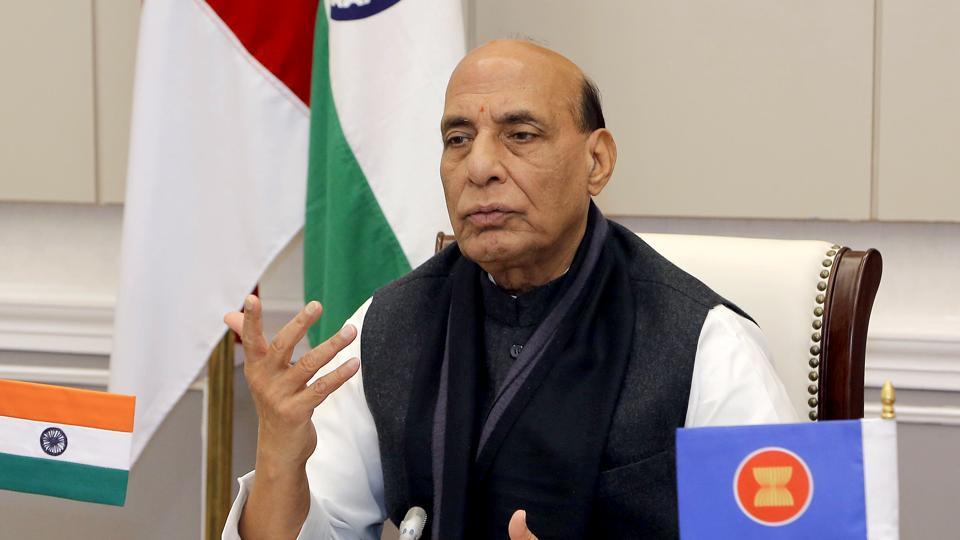DEFENCE MINISTRY APPROVES ACQUISITION OF MADE IN INDIA AWACS; NEXT GENERATION OFFSHORE PATROL VESSELS; MODULAR BRIDGES; CHECK DETAILS
The approval has been granted for the acquisition of the DRDO designed and developed AEW&C Systems for the Indian Air Force, Next Generation Offshore Patrol Vessels for the Indian Navy and Modular Bridges for the Indian Army
Amidst the ongoing standoff between India and China along the Line of Actual Control (LAC), a growing need is being felt for assets to help in monitoring the enemy movements round the clock on land, air and sea. On Thursday, at the Defence Acquisition Council (DAC) gave approval for various platforms, equipment and systems for the three services – Army, Navy and Air Force at an approximate overall cost of Rs 28,000 crore.
According to a statement issued by the Ministry of Defence (MoD) stated that six of the seven proposals — Rs 27,000 crore of Rs 28,000 crore for which AoN (Acceptance of Necessity) was granted — is expected to be sourced from the Indian industry, and this will give a boost to `Atmanirbhar Bharat and `Make in India’ initiatives.
Officials said a total of seven acquisition proposals were approved by the DAC, the defence ministry's highest decision-making body on procurement. Defence Ministry approves acquisition of military hardware worth Rs 28,000 crore
The approval has been granted for the acquisition of the DRDO designed and developed AEW&C Systems for the Indian Air Force, Next Generation Offshore Patrol Vessels for the Indian Navy and Modular Bridges for the Indian Army.
What Is AWACS?
Airborne Warning and Control System (AWACS) are eyes in the sky and are used for not only tracking but also helping in detecting the fighter jets, cruise missiles, and drones. And, these are faster than the ground-based radars, can be used in monitoring and tracking the ships out at sea.
What Will The Services Get?
The original plan was to have the AEW&C systems were to be fixed on larger body jets A-330 which were earlier expected to be procured from Airbus. However, this procurement program was put on hold.
Now, six A-319s and A-321 variants which are expected to be acquired from the Air India Fleet and modified will be having the AEW&C Systems fitted onboard. The indigenous Active Electronically Scanned Array (AESA) radar is going to be mounted on them.
According to sources, the Centre for Airborne Studies Lab (CABS) under DRDO is in the process of executing the Block-2 project. This is expected to be much more advanced than the existing systems.
What Do The Services Have?
As reported earlier by Financial Express Online, the IAF already has the Airborne Warning and Control System (AWACS) aircraft. These are meant to monitor the airspace deep inside the enemy territory and they operate on secure communication with network-centric warfare capabilities.
Three Israeli Phalcon AWACS are onboard Russian IL-76 transport aircraft, and there are two `Made in India’ two indigenous ‘Netra’ AEW&C aircraft. IAF got its second `Netra’ in 2019. The AEW&C system developed indigenously comes with an active electronically scanned array (AESA) radar, and it has secondary surveillance radar, communication and electronic countermeasures.
This indigenous AEW&C was mounted on a Brazilian Embraer-145 aircraft, designed specifically to suit the operational requirements of the IAF. It has a state-of-the-art integrated system and has the air-to-air refuelling capability.
Multiple sensors, and these help in picking up the low-level targets deep which are inside the enemy’s airspace.
Why Are They Called Eye In The Sky?
They are called `Eye’ in the sky because these AWACS have superior surveillance capabilities.
Efforts are on to integrate Indo-Russian BrahMos supersonic cruise missiles into the Russian fighter jets Su-30MKI which have been modified as per the requirements of the IAF. This is being implemented by the state-owned Hindustan Aeronautics Ltd (HAL) and the BrahMos Aerospace Pvt Ltd (BAPL), which is an Indo-Russia joint venture.
What Does Pakistan Have?
Based on the information available in the public domain, Pakistan has more `eyes’ in the sky compared to India. Currently, it has six of the Saab 2000 early warning aircraft.
When Did IAF Get Its First Indigenous AEW&C?
In 2017 and as reported earlier, has since then is providing Air Defence surveillance and control from different terrains which stretch from Jammu and Kashmir, Rajasthan and to the Rann of Kutch.
The approval has been granted for the acquisition of the DRDO designed and developed AEW&C Systems for the Indian Air Force, Next Generation...

www.indiandefensenews.in



